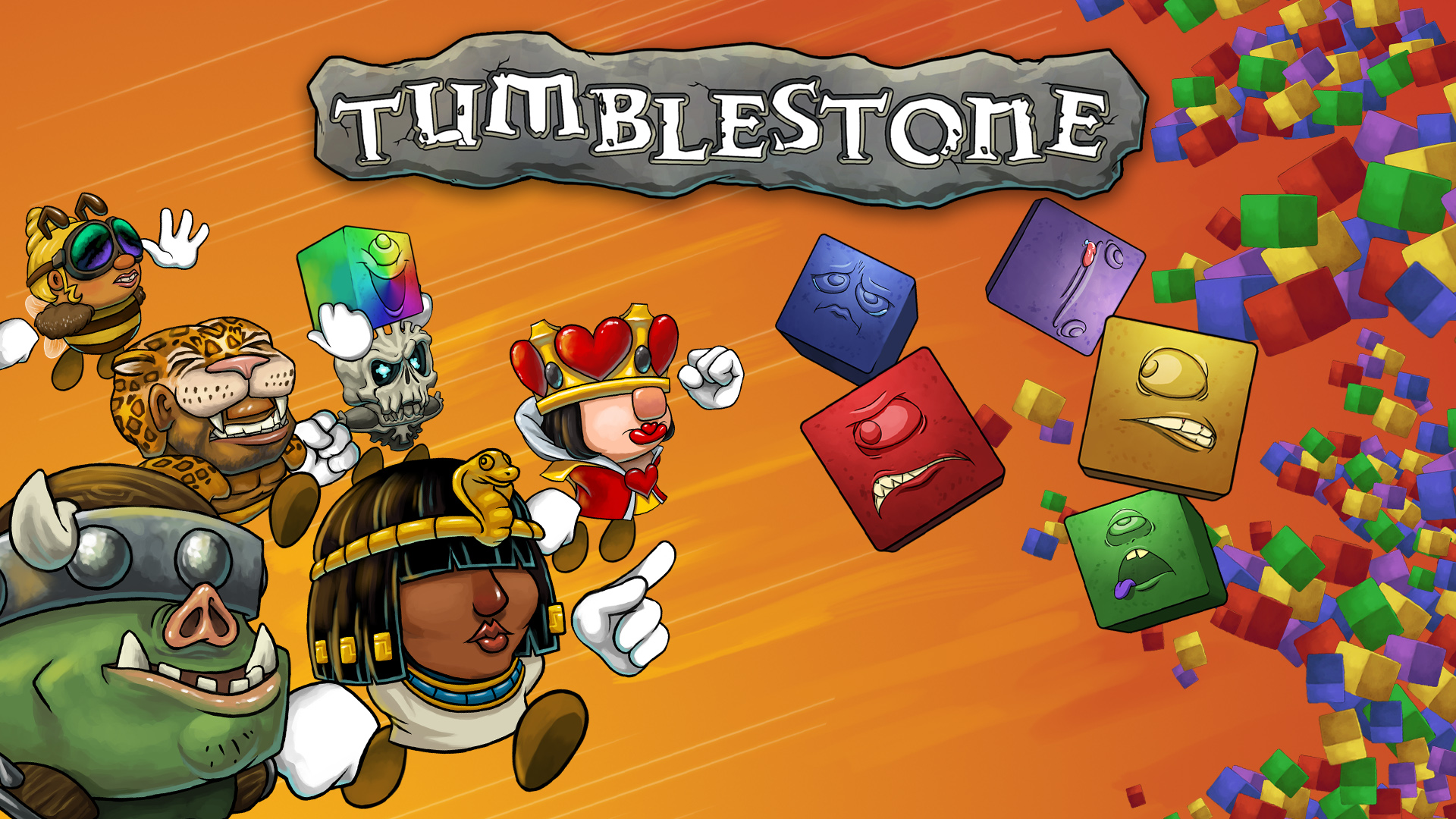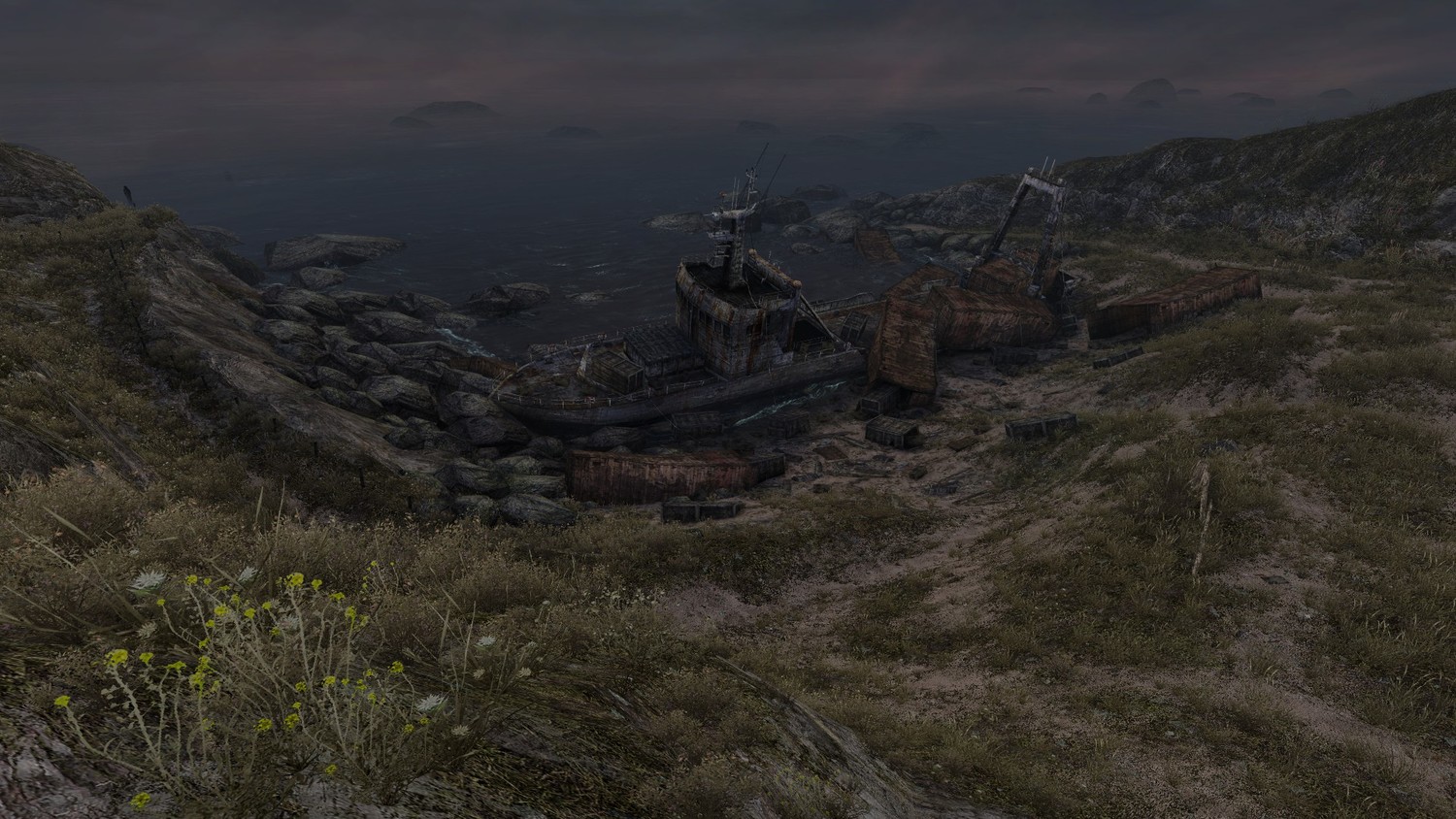
Review: Tumblestone
Posted by Eric G on July 30th, 2016 | 0 Comments | Tags: The Quantum Astrophysicists Guild , Tumblestone
I love Yoshi’s Cookie. I adore Tetris. As far as I’m concerned, Critter Crunch is an all-time classic. Tumblestone not only stands with those giants, but is in some ways better than them. The Quantum Astrophysicists Guild, developers behind The Bridge, have completely nailed the competitive puzzle game genre. If you have any affinity for the aforementioned games, Tumblestone will likely be right up your alley.
Like most great puzzle games, Tumblestone‘s rules are dreadfully simple. There are a bunch of colored blocks at the top of a 5×14 grid. Your character stands at the bottom of the grid, its position snapped to a column when moving left and right. Pressing the X button pulls a block from the bottom of your current lane. Pull three blocks of the same color to clear them. Rinse. Repeat. Get faster. Repeat. Throw in some modifiers. Repeat. Pull your hair out. Repeat. If you clear the entire grid (in any mode but Endless), you win. If playing against others, you’ll have to clear your grid the fastest or else survive the longest to achieve victory. With a single player campaign that is surprisingly lengthy and about 400 different ways to scrap in multiplayer*, Tumblestone is chock-full of gaming bliss.
The single player campaign follows wacky characters who are all wondering what’s going on with the sudden, mysterious tumblestone infestation. You’ll play as Queen of the Nile, the Goblin King, and King Sausage to name a few. There’s an interlocking story that serves its purpose, but the main reasons to trek through the campaign are to unlock modifiers and to get familiar with how they work. There are 12 modifiers in Tumblestone; each with a different take on turning the game on its head. For example, the Toggling Blockers modifier places a non-pullable block at the bottom of one column. Each time you pull a tumblestone, the blocker is switched on or off. It may not sound like much, but it changes the game in a way that forces you to plan ahead while keeping the switch’s status in mind. The Double Shot modifier has you pulling two blocks at once. Again, you’re going to need to see the board differently with this twist. One of the most mind-boggling modifiers I’ve played with is Column Flipping, which flips the column of the third consecutive block you pull. All of a sudden you need to figure out triplets that can come from bringing the top of a column to the bottom. It reminded me of walling up in Might and Magic: Clash of Heroes, which sometimes causes inaccessible units to be pushed back to within your reach.
When I first got a taste for Tumblestone, I wondered what the hold up was for a release window. Through conversations with Ty Tayler, the game’s lead designer, and in my own experience, I learned that online multiplayer is absolutely hellish to program for; or at least very time consuming. I was delighted to find that the online in Tumblestone is fantastic. You can start a multiplayer match against AI bots and (if you’ve kept those player spots public) get dropped in on by humans in the middle of rounds. It is exhilarating to drop in on a game in progress and sweep them up with some speedy play. It’s equally tense to be twiddling against AI and have someone fall into your game. Once a human would enter, I’d sit up, lean forward, and play way harder than I previously was. Players stick together in a lobby for quick rematches, and the host can switch up game modes and modifiers with ease. I wasn’t sure this game needed online play (the local multiplayer and the single player are both just fine), but after a few hours of puzzle brawling and climbing the ranks, I see why it was so important to wait for it to be ironed out before releasing the game.
Tumblestone works due to a decent amount of complicated math. I don’t pretend to fully understand them, but there are algorithms that are consistently creating new puzzles to populate the grid. The trigger buttons zoom your character to either the leftmost or rightmost column. Because of some clever programming, this means that, if you play the game to its ideal efficiency, your character will only ever be a couple of moves away from a valid pull. Though they will sometimes feel mind-shattering, all of the puzzles are solvable, most at a speedy pace once you start seeing the board correctly. I don’t often spend time talking about the nuts and bolts of a game, but it’s worth noting how brilliantly Tumblestone has been built.
If you’re anything like me, then you love tight, fast puzzle games. Tumblestone is all of those things and more. It’s multiplayer mode alone is worth sinking dozens of hours into. When the promotional video claims the story is 40+ hours long, it isn’t being dramatic. Interestingly enough, this is one of my only sticking points of the game. I think it could have achieved its purpose (training and challenging the player with myriad modifiers) in about half of the levels. As it stands, I find myself playing single player levels in about five-level chunks, sometimes ten, before feeling the slog. I think of the aforementioned Might and Magic: Clash of Heroes‘s single player, which clocked in at just over 20 hours, as a great example of how to train the player without boring them. That being said, modifiers can be used without unlocking them by joining multiplayer matches or playing the “Modifier of the Day” mode. With a single player mode that should last you a few weeks (or a few marathon sessions) and an extensive online/offline multiplayer mode, Tumblestone is worth your hard earned dollars. As always, challenge me if you’ve got it. I’d love to destroy you.
A Note on Community, Pricing, and Quality
I poured the bulk of my time into the Steam version of Tumblestone for a couple of reasons, the main ones being the fact that as a developer, Steam codes can usually be obtained easier and earlier than PSN codes. When I received a PSN code on release day, I played the crap out of the game again but noticed one major difference in my experience. The online community for the PSN version is sparse. I have rarely dropped into games with human opponents and humans have rarely popped into my games. This isn’t a game killer. The higher difficulty bots are incredibly skilled and will definitely challenge you. However, there’s a different emotion you get (that I mentioned earlier in the review) when playing against computers.
I have an idea that the $24.99 price tag is to blame, here. Do I think Tumblestone is worth that price? Absolutely. Without a doubt. I think back on games like Yoshi’s Cookie that cost $50-$60 when I bought them way back when. This game has so much more content than that game and pretty much any other puzzle game I can think of. The problem here is not Tumblestone‘s price, but the market for digitally distributed games as a whole. Getting rid of packaging, distribution, warehouse storage, and other brick and mortar costs doesn’t mean a game should cost $10. We live in a world where we dubiously value games; where a $60 remake of GTA V sells like hot cakes and a $3 mobile app seems expensive “for what it’s worth.” I’m not saying AAA games are the problem, either. The problem is in the consumer and the consumer’s perception of value. The same thing happened to N++ when it released at $19.99. The details of this may better be researched and poured into a separate post (I can’t believe N++ has 970 ratings and Super Meat Boy has upwards of 12,000), but my point is this: If you like interesting, fast, brain-scratching, and/or competitive puzzle games, you should buy Tumblestone.
A copy of this game was provided by the publisher for review purposes. For more info on our review policy click here.
*I didn’t do the math. I pulled the figure from the embedded features video. There are three game modes and 12 modifiers that can be mixed and matched.
General Info
- Developer: The Quantum Astrophysicists Guild
- Publisher: The Quantum Astrophysicists Guild
- Players: 1-4 (Local AND Online)
- Ratings: Everyone, PEGI 3
Score:
What I Like:
- Frenetic puzzle action.
- Simple rules, complex game.
- Online and offline multiplayer.
- Many modifiers and modes.
What I Dislike:
- Unlocking modifiers through lengthy campaign can get sloggish.




